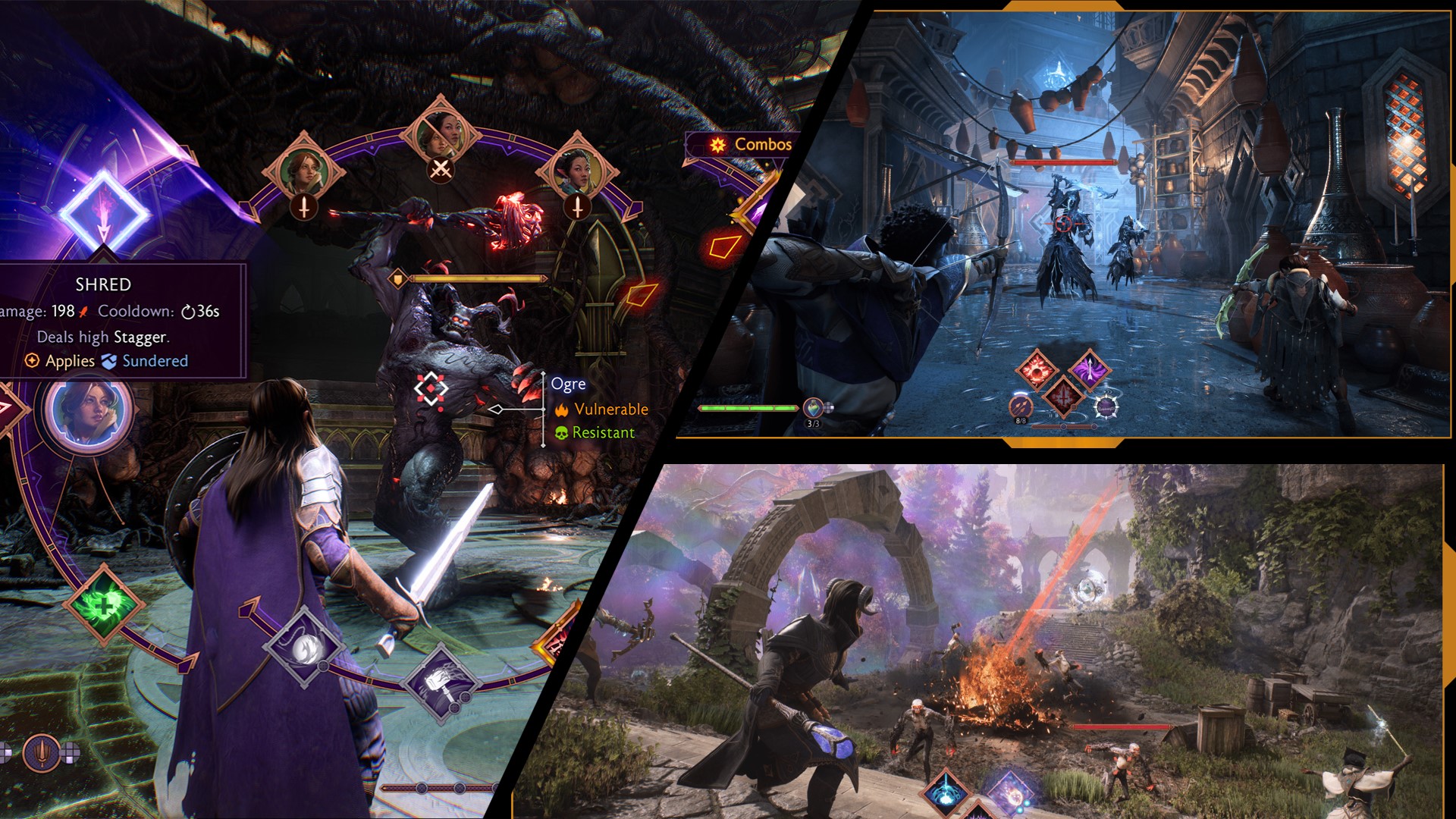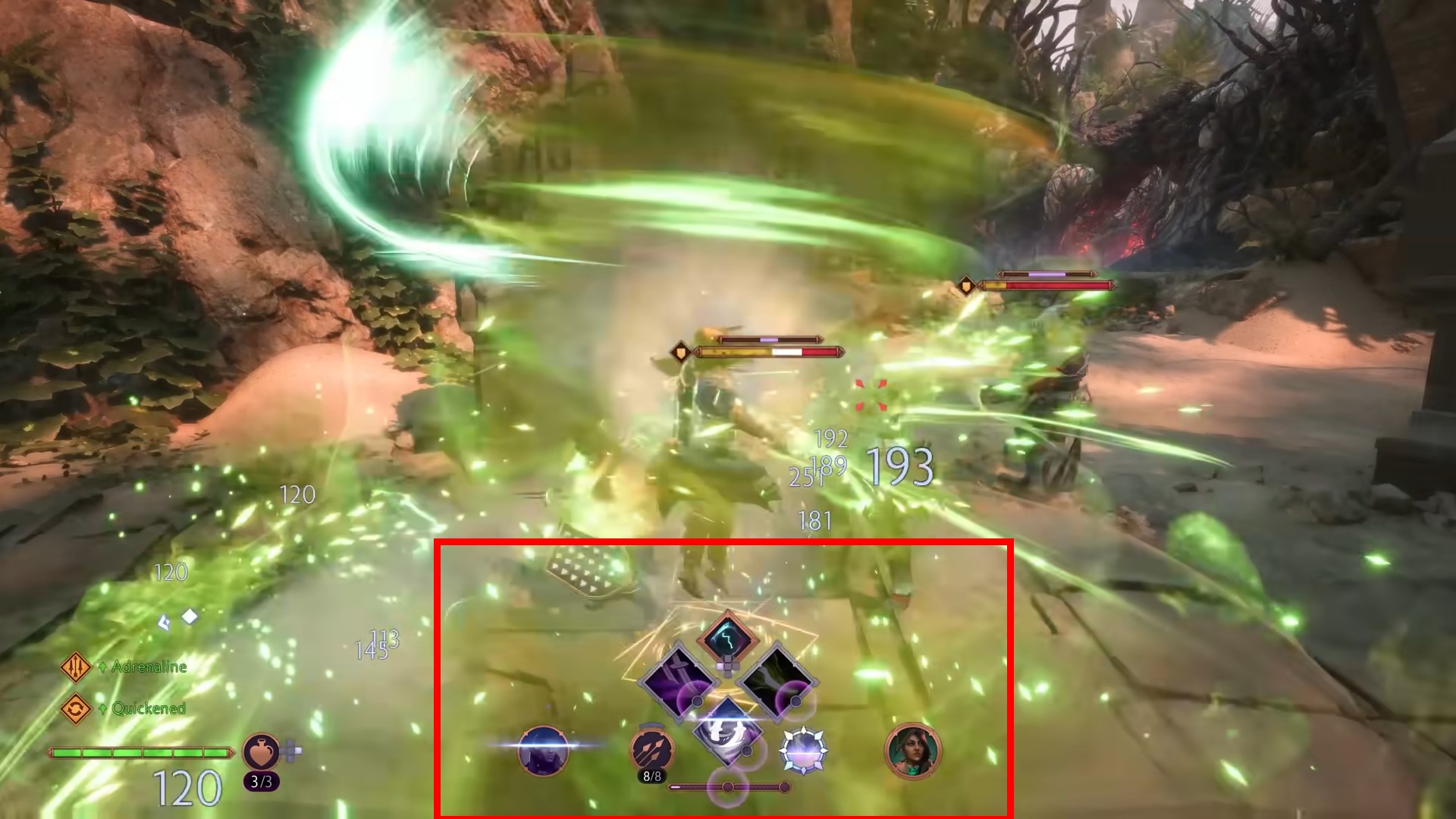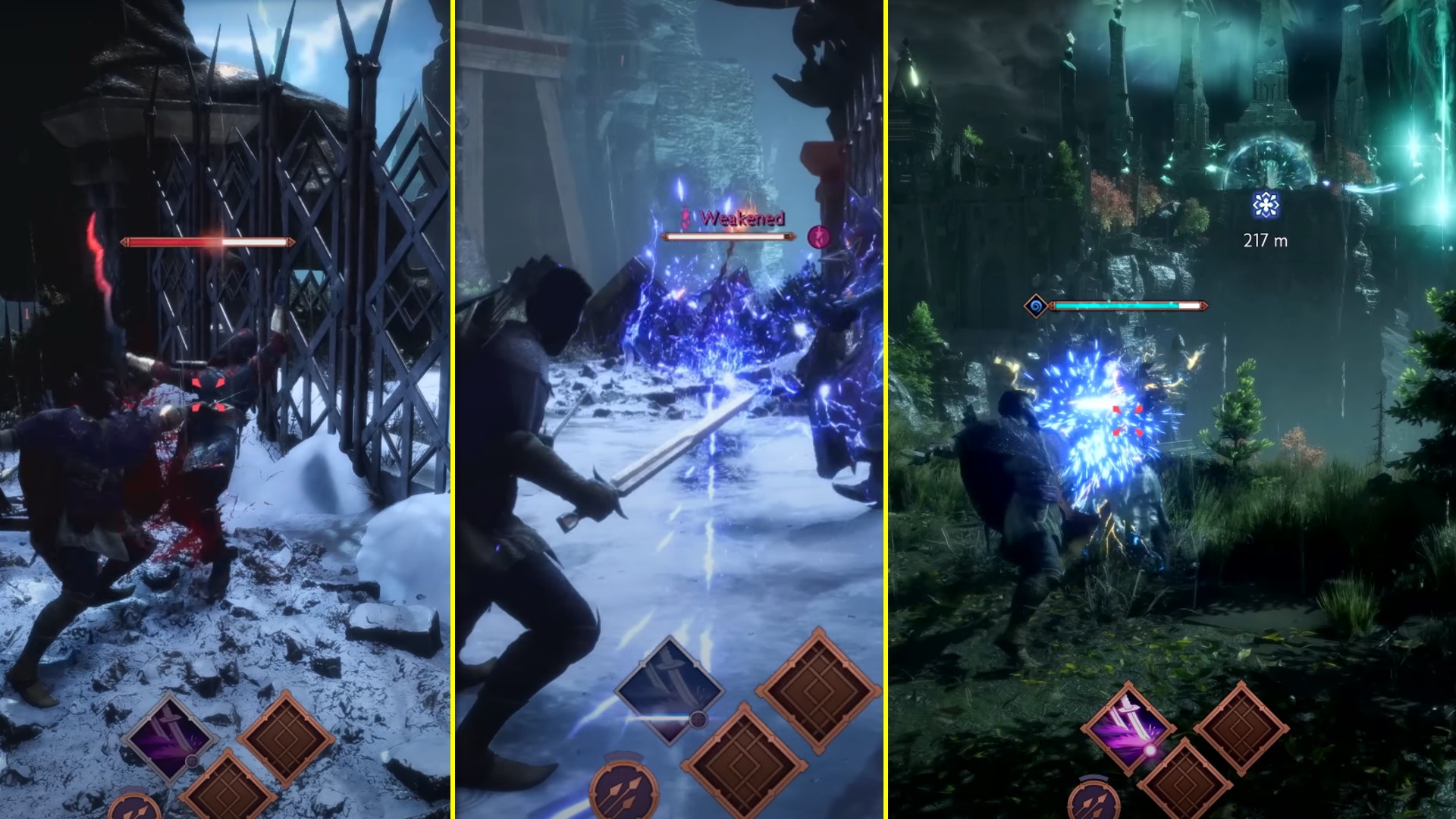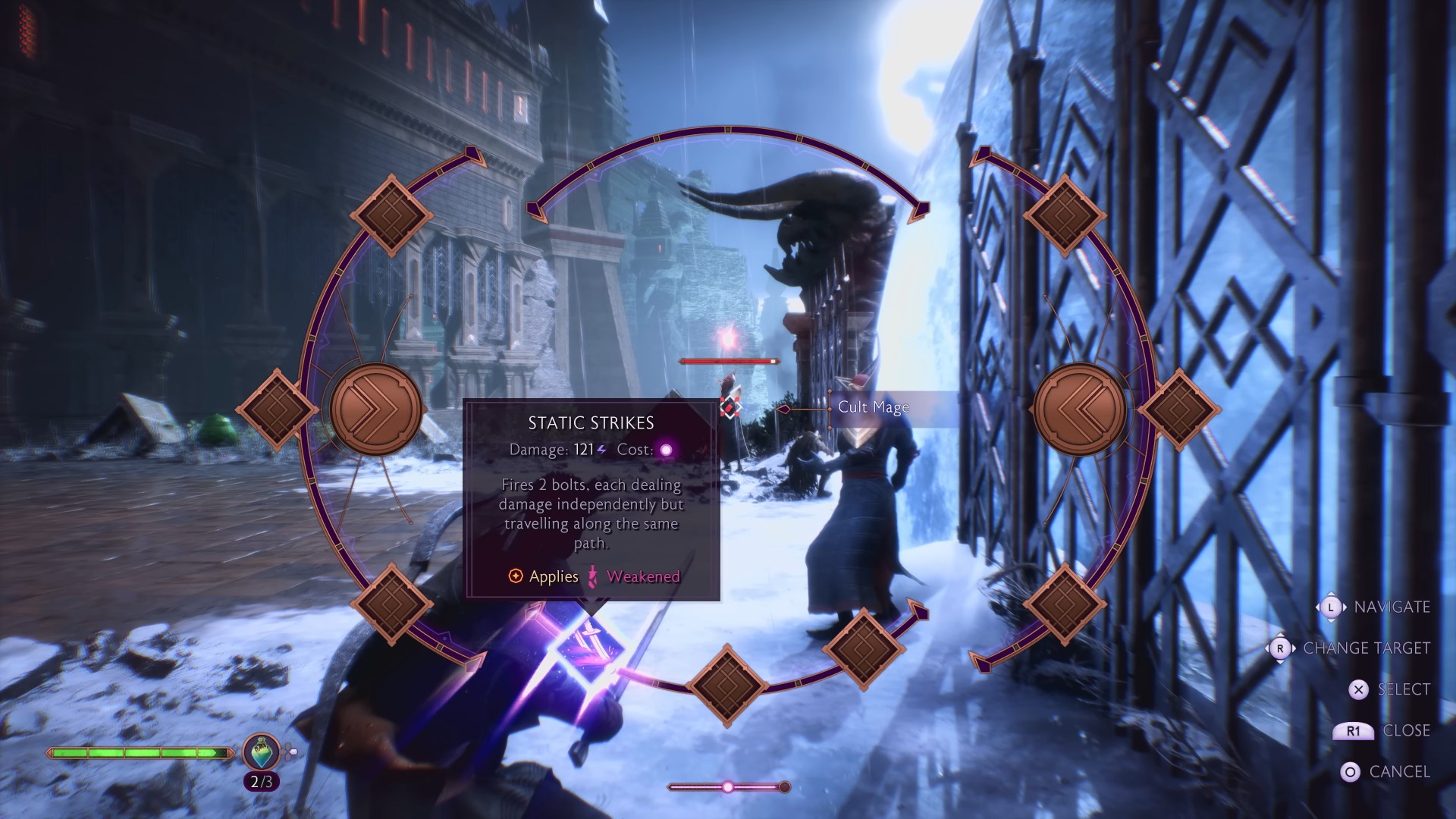In the upcoming Dragon Age: The Veilguard RPG, combat will be an essential part of your journey, and in this post, we conduct an analysis of builds, companions, abilities, and skill trees.

In DA:V, characters and builds will have a complex set of choices ranging from character creation to bringing companions in your party. Additionally, BioWare has blended some of the best parts of Mass Effect into the Dragon Age series, specifically combos. Therefore, players will have to familiarize themselves with a different, more action-oriented combat style using status effects and detonation abilities to trigger extra damage in combat. Thus, you’ll want to select the best faction (background), class, specialization, and companions to fit your playstyle and synthesize your party’s strengths.
In this guide, we walk you through what to expect in combat and how to optimize your party and build for combat performance.
Combat Analysis – Dragon Age The Veilguard

Dragon Age: The Veilguard’s combat will be action-based and sustainably different from previous titles. With a plethora of information pre-release, we want to break down and prepare players for what to expect on launch later this fall. Unlike previous Dragon Age (DA) games, combat is action-based and not turn-based. However, you can pause combat and order companions to perform various actions. BioWare seems to have blended the best parts from the Mass Effect series and Dragon Age into a much faster-paced, action-oriented combat system. As we continue our analysis, here are the most important aspects of combat in Dragon Age: The Veilguard:
- Factions – are chosen during character creation and give a unique bonus, and are vital for your build.
- Race – four playable races that influence mainly dialogue: Elf, Dwarf, Qunari, and Human.
- Class – there are three classes in the game with a party size of 3: Rogue, Mage, and Warrior.
- Specialization – each class has three specializations that augment their build, playstyles, and power.
- Max Level – a level cap of 50, with skill points throughout to truly customize your build.
- Companions – there are seven companions: two warriors, two rogues, and three mages.
- Combat – action-oriented, real-time, with dodging, blocking, abilities, light and heavy attacks.
- Combos – can use a combination of skills and abilities to amplify damage and cause explosion or status effects.
- Tactical Mode – you’ll still be able to pause combat and assign actions to companions with a wheel user interface.
User Interface

The combat User Interface shows four skills: healing potions, a ranged consumable (arrow), a resource bar, and trait ability. The image above shows the combat perspective of the Rogue class at higher levels, foreshadowing what we can expect. The red square shows all the abilities. The trait skill on the bottom right is a skill that is only activated after a series of button presses. There are also two small dots, which ones filled allow the usage of a particular ability. Thus, Rogue’s combat involves landing multiple light or heavy attacks to fill their momentum meter and unloading a powerful attack.

The health bars come in a variety of forms. The standard health bar is red; when taking damage, it shows a lowering with grey. Dragon Age: The Veilguard also has status effects and combos shown on the health bar. The Rogue in EA’s gameplay inflicts Weakened status affected. There is a text above the bar and a symbol to the right. These symbols and recognition will be critical to time your combos and detonations and will likely be a process similar to Mass Effect Andromeda. Lastly, you see a blue bar above a specific enemy with a blue icon to the left of their health bar. This is likely an elemental shield and is reduced with a specific element or damage source.
As we analyze the combat user interface in Dragon Age: The Veilguard, we see that it appears simple and clean. However, many symbols, status effects, and resource tracking will be critical for players to recognize in combat.
Combat & Movement
Combat and Dragon Age: The Veilguard will be real-time action-oriented. Your character will have three active skills based on their class and specialization. Each skill will have cooldowns and, therefore, cannot be used repeatedly. Moreover, each class will have ranged and melee damage options, including light and heavy attacks.
Defensive and damage avoidance can be done in a variety of ways. Both melee and ranged combat have telegraphs when being targeted. With a melee attack, players will see a grey halo above their heads, which becomes more yellow over 1 to 2 seconds. The same applies to ranged attacks, though a line travels to the player. This system resembles Hogwarts Legacy and might reward players with a perfect dodge, parry, or skill combo to reflect damage. Moreover, the game doesn’t appear to have a stamina bar. Thus, unlimited dodging could be possible, at least with the Rogue class.
Healing was shown through potions only, but we imagine the Mage class will specialize in healing.

Each class will have its unique combat resource mechanic represented in the bottom center of the User Interface. For the Rogue, you use momentum. Each time you do damage, the bar fills up. However, each time you take damage, the bar drops. Once filled, you can use the ability to amplify the damage. Therefore, each class must carefully master combat and build a character towards their class’s specific resource system.
The bow was also shown in the gameplay reveal and requires aiming. This could be difficult for players who avoid first-person shooters and might be something to consider when selecting their preferred class.
Skills and Usage

In Dragon Age: Veilguard, each character will have three equipped skills, which can be activated on their bar or through pause tactical combat perspective. These abilities include a cost; for the Rogue, it’s the momentum resource. Furthermore, abilities can inflict status effects and prime or trigger combinations. Therefore, players will want to coordinate their protagonist character with companions to optimize their party’s combat potential.
Likely, you will want a tank character with crowd control and debuff enemies. This will keep pressure off your backline, Rogue, and/or Mage. Next, you want a stealthy burst character like the Rogue focused on single-target damage. Lastly, the Mage will serve as a healer, ranged damage dealer, and area (AOE). The most important aspect is combining multiple damage types (elemental) and status effects to ensure you can melt through any encounter. Dragon Age The Veilguard will feature elemental resistance and weakness so that a balanced approach would be best.
Skill Types in Dragon Age Veilguard
In Dragon Age the Veilguard, skills are broken into five types: abilities, traits, passives, and ultimate. Your active skills (abilities) are used throughout combat and are on a cooldown, with an ultimate ability used infrequently. Additionally, you have a trait skill that can be activated with multiple bottoms simultaneously. With a max level of 50, you earn one skill point at each level, which can be spent on the skills user interface to take bonuses, new skills, or traits.
The honeycomb skill tree features different symbols that indicate unique bonuses. Below are the type of skills and unlocks as you progress in various skill trees:
- Small Diamond: Abilities
- Large Diamond: ultimates
- Hexagons: traits
- Circles: passives
The most important thing to remember when selecting skills is you are limited with abilities and ultimate. You can only slot three abilities and one ultimate; therefore, don’t spend a huge investment in skills you won’t be able to use. Your goal should be taking a limited amount of abilities and ultimate while loading up on passives to boost combat power.
How to Upgrade Skills in Dragon Age: The Veilguard
Individual skills cannot be upgraded directly in Dragon Age: The Veilguard, but you can modify a skill or grant an ability a combo bonus by unlocking Trait hexagons on the skill tree. Unlocking Traits to upgrade your ability will also require spending skill points.
Furthermore, skill points are generally earned by playing the game, completing quests, and defeating enemies to earn EXP and level your character up. However, you can also earn skill points by finding codex entries and other smaller EXP-granting discoveries.
Tactical Mode and Combos in Dragon Age: The Veilguard

Dragon Age: The Veilguard will feature a tactical mode system where players can pause live action to give specific commands to companions and use abilities. The user interface for Tactical mode displays each companion’s skills and cooldowns on the left and right. The player’s skills are on the bottom, and the companion’s portrait you find at the top. The enemy NPC is shown in the center, revealing vulnerability and resistance. Therefore, players must constantly enter Tactical Mode during new enemy encounters or challenging fights to discover tips for destroying enemies.
Additionally, you will notice companion number two can light up and say “combo with.” Dragon Age The Veilguard will feature a combo system combining multiple abilities and status effects to produce additional combat amplifications. The skill Shred inflicts Sundered, once any enemy is Sundered, you can combo with companion number two ability. Thus, selecting skills that both prime (start a combo) and detonate (finish a combo) is critical to performance in combat.
Abilities and Skill Trees

Each class will have three specializations requiring players to invest skill points to travel along a web of skills, passives, and ultimate. This honeycomb system is familiar with other games and has a middle section with likely universally useful skills.
The icons represent which type of skill or ability you can unlock. Diamond shape skills are abilities that you can slot (up to three). Large circles are class skills, medium circles are passives and ability upgrades, and small hexagons are traits. Lastly, small circles present passives and stat boosts. Likely, players will only want a small selection of skills that supplement each other’s combo priming and detonating system. From that point, players should optimize for maximum effectiveness with ability boosts and passives vs. a massive amount of skills.
Dragon Age will feature the holy trinity in RPGs, tanks, healers, and DPS. However, you can specialize in various aspects within this system, giving your build and party composition a unique feel and playstyle.
How Builds Will Work in Dragon Age: The Veilguard
The most critical aspects of combat and builds analysis in Dragon Age: The Veilguard are faction, class, specialization, abilities, skill trees, companions, and gear. Below are the factors to creating a Build:
Faction – will give players a unique bonus and is likely suited for individual classes and specializations. Therefore, even in character creation, you’ll want to make a strategic decision for your faction.
Class – your class will determine your overall playstyle, resource system, and specialization choices. You will want to identify companions to complement your selected class and not choose three Mages with little survivability or three rogues with no tank.
Specialization – using the skill trees, you will want to navigate to find new abilities and skills while also boosting passive bonuses to get the most out of your three active skills. There is a respec system in Dragon Age, The Veil Guard, so experiment frequently and adjust according to your companions.
Companions – Your companions can bring three active skills and gain new skill points based on your relationship status. Moreover, they will not be able to change classes, and you will want to select your starting class and companion based on complementary gameplay. E.g. selecting a tank companion would be a good combination if you intend to play a ranged spellcasting mage.
Skills & Passives – players will want to select a limited number of skills and focus on amplifying passive bonuses and traits for the best results. With only three active skills, having a variety in combat isn’t as effective as sheer power. However, you can use multiple weapon load-outs and are likely to swap between two or more skill sets during encounters. This could be useful to counter resistant bosses.
Gear – weapons, armor, and jewelry will likely amplify your skills, companions, and combat power.
FAQs about Skill Trees and Builds in Dragon Age: The Veilguard
Q1: How many different skill types are there in Dragon Age: The Veilguard?
Answer: There are five different skill types in Dragon Age: The Veilguard that you can unlock on the skill tree of any class. Class skills are your core abilities, Abilities are actions that can be used during combat, Traits are ability modifiers, Passives are always active buffs, and Ultimates are powerful finishing abilities.
Q2: Do you have to be part of the Faction associated with your Skill Specialization in DA:V?
Answer: No, you do not have to join the Faction that is associated with your class Skill Specialization in Dragon Age: The Veilguard. Your faction/background is chosen during character creation, but this decision does not lock you into a specific skill specialization. No matter which faction you choose, you are free to choose any class skill specialization you like.
Looking For More?
Thank you for reading the Dragon Age: The Veilguard – Skill Trees Builds and Combat Analysis. We provide the latest news and create guides for Baldur’s Gate 3, Fallout 4, ARK Survival Ascended, and more. Also, watch me play games on Twitch or visit my YouTube channel!
- Dragon Age: The Veilguard – Backgrounds (Factions) Explained
- Dragon Age: The Veilguard – All Companions and Everything We Know
- Dragon Age: The Veilguard Classes and Specializations
- Dragon Age: The Veilguard – All Playable Races
- Support us at Checkout Using Promo Code DELTIASGAMING (here)
 Reddit
Reddit
 Email
Email




